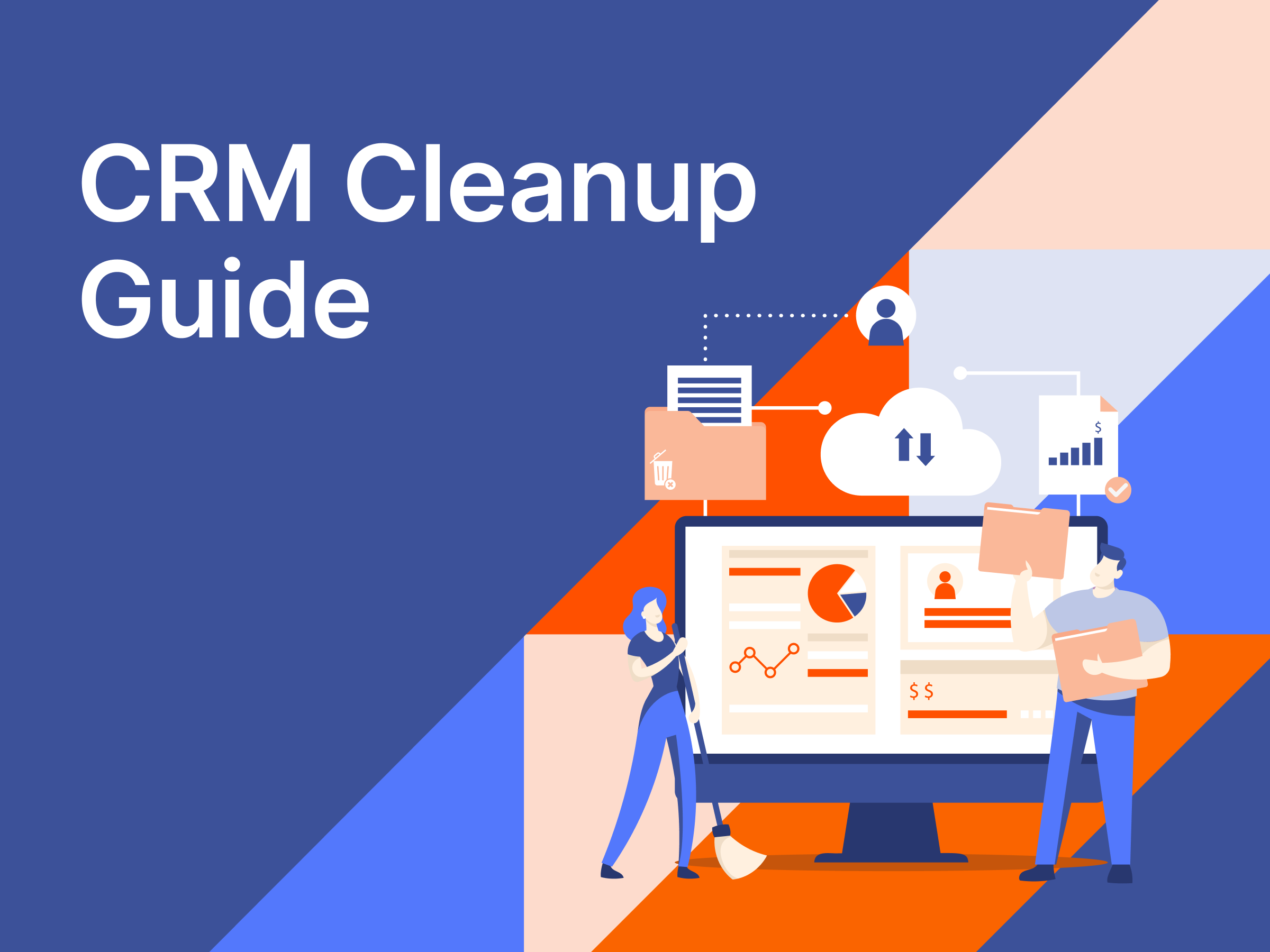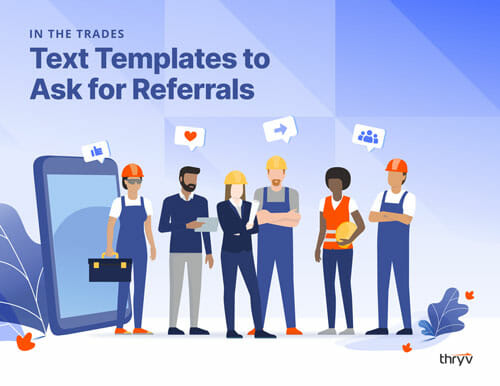Would you trust a stranger over your best friend? Probably not – and that’s how most people feel about advertising.
When it comes to buying something, customers don’t always trust brands – but they do tend to trust other customers. They want the approval of a friend or relative who will give them an honest assessment of your products and services.

Free: Text Templates to Ask for Referrals
DownloadThese are called customer referrals, and they’re incredibly lucrative for your business.
A customer referral program creates a pipeline of trustworthy advocates who build brand awareness and help you close deals. In this post, we’ll explain how to start a customer referral program for small businesses and how to improve one over time.
What is a Customer Referral Program?
A customer referral program is a marketing strategy that encourages people to recommend your business to others. These programs capitalize on timely opportunities to ask for referrals and use incentives to motivate customers to talk about your business.
For example, if we owned a landscaping company, we could ask customers to like and share our content on Facebook. We could also offer a 10% discount if they refer a friend to our business. Both are examples of referral programs that effectively increase brand awareness for our company.
There are several ways to create a customer referral program. Yours can be detailed and organized, or it can be casual and relaxed. It depends on your goals and how likely customers are to recommend your business.
Let’s review how to create a customer referral program for small businesses in the section below.
How to Create a Customer Referral Program for Small Business
- Map out the customer experience.
- Leverage customer data.
- Analyze customer feedback.
- Use customer referral software.
- Select relevant incentives.
- Promote your customer referral program.
- Analyze and make changes over time.
If you want a brief overview of starting a referral program, this video outlines the basics in three simple steps.
Now, let’s go into more detail and explain how you can implement these steps for your business.
1. Map out the customer experience.
To spot timely opportunities to ask for referrals, map out your customer experience. A customer journey or experience map outlines every major interaction that a customer has with your brand, including moments like discovering your products and leaving a review for your company.
Here’s an example of what a customer journey map looks like:
This document shows us when it’s a good time to ask for referrals. We can look for moments when customers are happier with our brand and avoid times when they are less likely to refer our business. Not only does that increase the likelihood of getting referrals, but it also decreases the chance that we will upset customers with untimely requests.
2. Leverage customer data.
Another handy resource to leverage is your customer data — primarily your CRM. A CRM is packed with information about your customer base, including who your most loyal customers are and which ones actively engage with your business.
You want to identify these individuals because they’re the most likely to advocate for your brand. Look for customers with the most lifetime value and the ones who praise you often on social media. These people will be more familiar with your brand and more willing to refer you to their friends, family, and coworkers.
The best way to find loyal customers in a CRM is to add tags for “lifecycle stage” – which is basically a way to say where this person is in their customer journey, whether they’re just a lead or a loyal customer – to each contact. Filter for the number of purchases made, money spent with you, and positive reviews to narrow your contact list to customers most loyal to your business. From there, you can use tags to form an email list, so sending them messages in bulk is easy.
Here’s what that looks like using Thryv’s CRM:

CRM Cleanup Guide
Get your CRM data in tip-top shape — and keep it that way!
3. Analyze customer feedback.
Customer feedback is one of the most useful resources for boosting customer referrals. It tells you exactly how people feel about your business, and most review sites offer a way to respond to customers directly from the platform. That provides a perfect opportunity to ask for referrals from customers who recently had good experiences with your business.
One of the most common ways to collect customer feedback is through a survey or form. Surveys don’t have to be anonymous, and you can ask customers for feedback on specific areas of your business. In fact, one of the most popular survey questions is, “Would you recommend our business to others?” If the answer is “yes,” then you can follow up and see if they want to enroll in your customer referral program.
4. Use customer referral software.
Aside from a CRM, plenty of other tools are needed to manage a customer referral program. For example, a local listing management tool monitors reviews on sites like Google, Yelp, Facebook, and more. You don’t have to jump between websites to respond to each customer because all your reviews are located in one place.
You may also consider a social media management tool to oversee your company’s social accounts. These products notify you whenever someone comments or mentions your brand online so you can quickly respond – and, when appropriate, jump on timely marketing opportunities.
Finally, one last tool that can make a difference is a shared inbox. A shared inbox forwards your emails, voicemails, and web chat conversations to one central place. Here, you and your team can reply using a shared email address, making it easier to respond to customers. Timeliness is important with customer referrals, and reacting and responding quickly goes a long way in growing your business.
5. Select relevant incentives.
Some customer referral programs don’t offer an incentive. Sometimes, you just need to ask, and customers will help your business – especially if they’ve had great experiences with you.
Other times, a discount or deal can be the driving force that leads to customer referrals. For example, companies like HelloFresh offer discounts to customers who refer the brand to new buyers.
Your incentive doesn’t have to be a massive giveaway, but it should be relevant to your audience and enticing enough to get them to act.
Here are a few ideas for your customer referral program:
- Discounts
- Free Products or Services
- Gift Cards
- Loyalty Points Program
- Exclusive Events
- Contest or Giveaway
6. Promote your customer referral program.
Once you know who you’re targeting and what you’ll offer them, the next step is to promote your customer referral program. Integrate it into your marketing campaigns and share updates with your followers through email and social media.
Again, leverage your CRM to send direct messages to your most loyal customers first. These folks may not even need an incentive, so they should be at the top of your list to contact. Plus, a personal message will mean much more than seeing an ad on social media.
7. Track referrals and make improvements over time.
While it may seem obvious, it’s important that your tracking system for referrals works. If not, you’ll have angry customers wanting credit for the business they provided you. You might lose more customers than you’ll gain if you can’t follow through on your promises.
You should also look for opportunities to improve your referral program over time. For instance, if you notice that most people leave reviews on your Google Business Profile, you may direct more customers there than to your social media pages. Remember, you’re asking customers for a favor, so you should make it as easy as possible to refer your business.
Making a Referral Program for a Small Business
If you’re making a referral program for your business, start small. You don’t need a multi-tiered approach or a complicated points system. In fact, an automated email campaign is a great place to start. Send customers a message after they leave a good review and ask them to refer your company. If you don’t see immediate results, sprinkle in an incentive like the ones listed above. Use these tips to improve your program over time and attract new customers to your business.

Text Templates to
Ask for Referrals
Asking customers for a referral is a great way to get new business. In this free resource, you’ll get six templates you can copy and paste to ask your customers for referrals, along with helpful tips.


